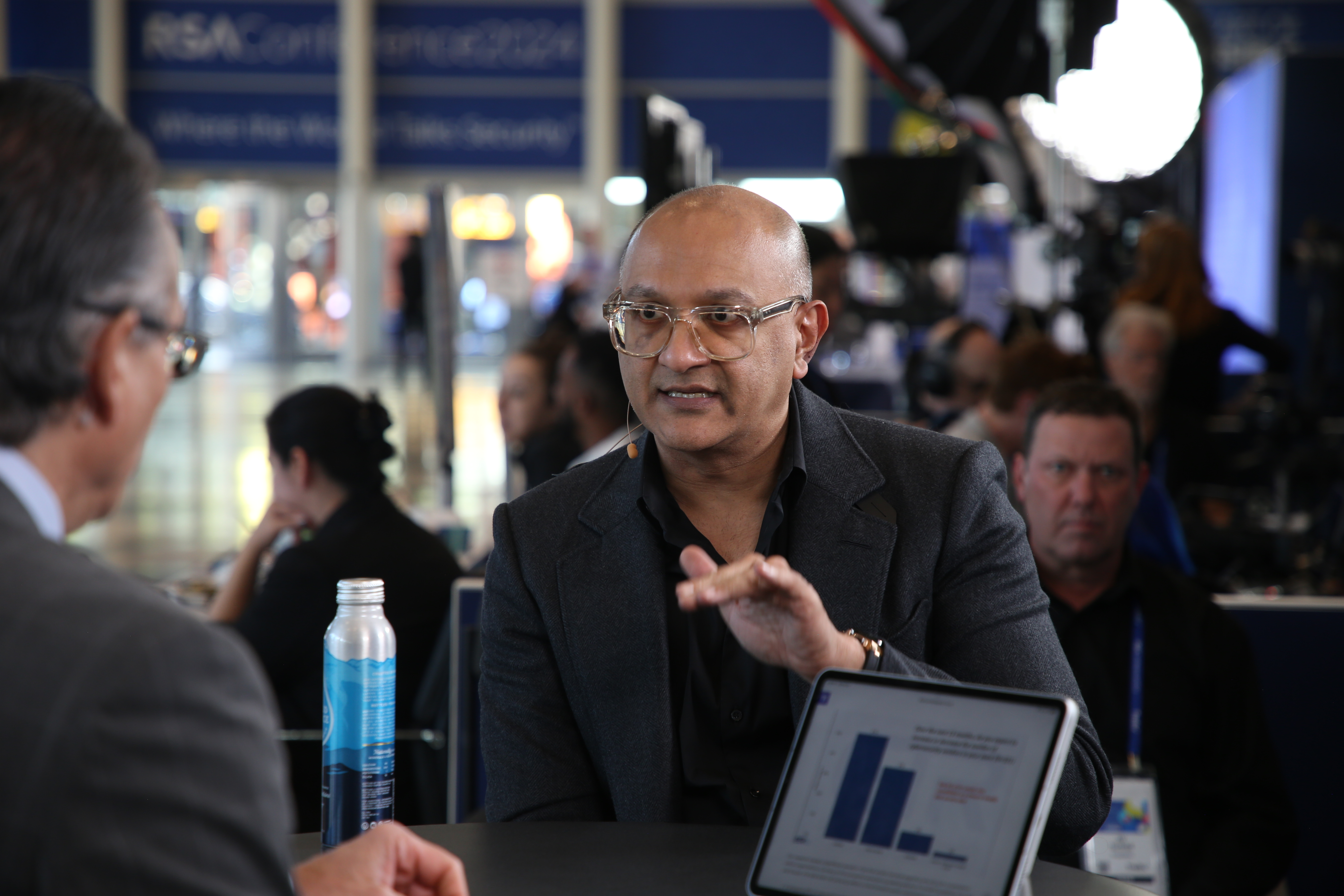Cisco Systems Inc. managed to put up a strong “beat and raise” in its fiscal second-quarter earnings this week, and investors took the news positively as the stock is trading at an all-time high, excluding the overvaluation during the dot-com bubble.
Beyond the strong quarter, the results also highlighted several broader themes. Here are my five takeaways from Cisco’s most recent quarter:
Security is moving the needle
For the past several years, I have referred to security as the biggest opportunity Cisco had to grow its revenue and its stock price. Last May, I mentioned in a post how Jeetu Patel (pictured), then head of security and collaboration and now chief product officer, had retooled security.
Since then, Cisco has released a flurry of security innovations, including extended detection and response or XDR, AI Defense and Hypershield, and the recently announced Smart Switch, which uses data processing units to embed security into the network. Although growth was only 4%, the company is seeing good momentum in new products.
On the earnings call, Chief Executive Chuck Robbins talked about security order growth and the impact of new products.“Our security orders more than doubled again this quarter,” he noted. “In just 12 months, both Cisco Secure Access and XDR have gained more than 1,000 customers combined, and approximately 1 million enterprise users each.”
Moreover, he added, “Even before it’s in full production, Hypershield is also seeing solid momentum. In Q2, we booked major platform deals with two Fortune 100 enterprise customers who are leveraging Hypershield to deploy security into the network in a fundamentally new way.”
Right now, order growth is more important than actual revenue as most of it is sold with a subscription model, which leads to “revenue stacking,” and that takes a while to see meaningful results. Security growth is a key indicator for sustained growth because the industry is massive and the competitive landscape is highly fragmented. Capturing even a moderate amount of share will change how Cisco is perceived by investors and continue to move the stock up.
The platform effect is taking hold
Since becoming the company’s first CPO, Patel has been emphatic about creating a Cisco “platform” and while Cisco has used the term before, it was more a euphemism for product bundles. To describe his vision, Patel often refers to Apple Inc., which is the best example of a company that delivers great experiences through its platform. I’m “all in” on Apple because I can do many things I could not with a collection of best of breed products. I can iMessage on my laptop, I can cut text from my phone and paste it on my tablet, I can push a webpage from one device to another.
We are starting to see the fruits of the platform effect at Cisco with ThousandEyes integration across all its devices making troubleshooting easier. Some of the new security products leverage network telemetry to “see” things cyber only tools can’t. The new Webex codec uses network intelligence to deliver a high-quality experience over a low-bandwidth connection and it has a single AI agent that spans all its products.
During a conversation with Patel, he told me his goal is to build a platform that delivers “magical experiences which people love and tell others about.” He has been CPO less than a year, but so far, so good. Cisco Live US is coming up in June and we should see more evidence of it there.
AI will be a catalyst for growth
The hype around artificial intelligence is at an all-time high, but most of the focus has been on graphics processing units and servers. The reality is the network plays a critical role in AI performance and that has yet to be reflected by the investor community — but that should change soon. During the earnings call, management stated it expects to exceed $1 billion in AI product orders for fiscal year 2025, comprised of a broad set of products, including network infrastructure, optics and Unified Computing System servers.
To help customers accelerate deployments, Cisco recently rolled out its AI PODs, which are turnkey, end-to-end Cisco solutions that can be deployed and used immediately for AI training and inferencing. This is a good example of the platform effect cited above.
Splunk is about more than adding revenue
When Cisco acquired Splunk Inc., many investors I talked to made comments such as, “It paid $28 billion for $4 billion a year in revenue.” Given Splunk’s margins, that’s a decent return. However, the value of Splunk is about more than dollars contributed. Since closing the deal 11 months ago, I have seen Splunk integrated across multiple Cisco products.
As Robbins said on the earnings call, “Since Splunk became a part of Cisco almost 11 months ago, we continue to integrate our businesses and fuel synergies without disrupting momentum. During the quarter we also integrated Talos into Splunk’s newly released Enterprise Security 8.0 solution and AppDynamics into Splunk’s on-prem log observer.”
At the National Retail Federatio show, Splunk observability was on display as part of its retail solutions, and I’ve seen many Cisco-Splunk cross-selling deals in the field. One interesting trend to watch is how Cisco brings Splunk and its other products together to address the growing interest in digital resilience, which is being fueled by AI. More to come on that.
Cisco’s not trading as a software company yet
From a stock perspective, Cisco still looks like a hardware company despite some strong software metrics. On the call, Chief Financial Officer Scott Herren highlighted many metrics, such as annual recurring revenue, that point to it having made the shift from hardware to software. As he explained, “Total ARR ended the quarter at $30.1 billion, an increase of 22%, with product ARR growth of 41%. Total subscription revenue increased 23% to $7.9 billion, and now represents 56% of Cisco’s total revenue. Total software revenue was up 33% at $5.5 billion, with software subscription revenue up 39%.”
However, even at the higher stock price, Cisco’s price-to-earnings ratio is only about 17X, below the peer group average of 22X. It’s a company that has traded as a value stock for some time, since that’s what it has been. Security and AI give the company the chance to break into growth mode, but platform is the key to differentiation over the dozens of point products, many of which have significantly higher valuations than Cisco.
One last note on this quarter: The company announced that Gary Steele, former Splunk CEO and current president of Cisco go-to-market, will resign as of April 25. Although I have no official word from Cisco on why Steele is leaving, he has been a CEO since 1998, and post-Cisco, he will pursue another CEO gig. Assuming Robbins is at Cisco for the foreseeable future, I take the company’s statement of his wanting to be a CEO at face value.
Zeus Kerravala is a principal analyst at ZK Research, a division of Kerravala Consulting. He wrote this article for News.
Photo: News
Your vote of support is important to us and it helps us keep the content FREE.
One click below supports our mission to provide free, deep, and relevant content.
Join our community on YouTube
Join the community that includes more than 15,000 #CubeAlumni experts, including Amazon.com CEO Andy Jassy, Dell Technologies founder and CEO Michael Dell, Intel CEO Pat Gelsinger, and many more luminaries and experts.
THANK YOU









